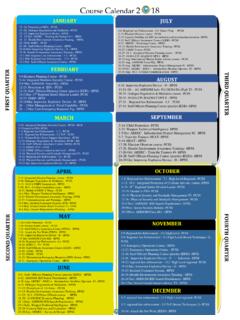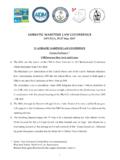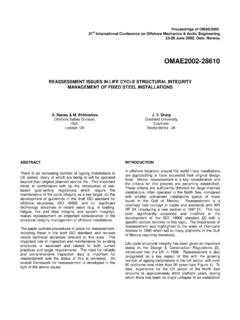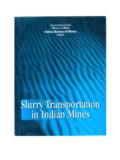Transcription of Carana - IPSTC
1 Carana Country Study Carana 8th Continent 2/16 Geography Location Carana is located on the east coast of the 8th Continent between the 8th and 10th latitudes. The total area of Carana is 120 000 sq km with 300 km coastline. Carana has land boundaries of 1500 km with its neighbouring countries. Topography Carana is topographically divided into two major areas; the plains in the eastern and central parts of the country and the highlands in the West and Southwest areas. In general terms, the terrain in Carana increases in elevation from East to West from sea level to a height of 1200 m.
2 The undulation is mostly flat and smooth with insignificant areas of rocky, steep terrain. The terrain along the coastline is flat with no cliffs or rocks. The water is calm with only a few areas suitable for deep-water ships. Hydrography The three main rivers in Carana , the Kalesi, Mogave and Torongo, flow from the western highlands in an easterly direction and discharge in the ocean. The Kalesi River discharges in a large delta with surrounding swamp lands. Though all major rivers are in principle navigable, the Torongo is the only waterway used for transportation. Two dams along the Kalesi and Mogave are used to produce electricity.
3 Carana has no large natural lakes. Climate and Weather The climate in Carana is hot and humid. Close to the equator, Carana has no distinct winter and summer. The average daily temperature during the dry season is 36 degrees C; the average nightly temperature is 22 degrees C. The rainy season runs from early October to December with an average precipitation rate of 250 mm a month. Vegetation Carana was originally completely covered by jungle and dense bush land. Over the last century, the central and eastern areas have been cleared and cultivated, being used for agricultural purposes.
4 Even though the soil in Carana is fertile, the intensive use of the land as pasture has left large areas barren and useless for agricultural purposes. Approximately 20 % of the total area is currently in use for growing grain, millet, vegetables and fruit. The west and south of the country is still covered by jungle and dense bush land. Small areas in the jungle are used for agricultural purposes. Natural Resources 3/16 Carana is rich in natural resources, which are not equally dispersed throughout the country. In the jungle covered mountains of the west, rare wood and timber are the main natural resources.
5 Diamonds are found along the Kalesi River in the provinces of Mahbek and Barin. Copper is mined in the highlands west of Mia. Coal is mined in the province of Hanno. The soil in Carana is naturally fertile. The rivers and coastal waters are rich in fish. Population General Facts Total Population 14 million Population Growth Age Distribution <15 : 44 % 15 to 18 : 13 % 18 to 60 : 39 % >60 : 4 % Fertility Rate children per woman Sex Ratio females/male Infant Mortality deaths per 100 live births Life Expectancy Total population: years Male: years Female: years Language In Carana there are more than 20 original languages or tribal dialects spoken.
6 The official and administrative language is French. Ethnic Distribution The population of Carana consists of more than 15 ethnic groups. Most of these groups are small in number and socially and politically irrelevant. The three major ethnic groups, the Falin, Kori and Tatsi represent 90 percent of the population. The Kori (38%) live in the west and are the dominant ethnic group in the provinces of Tereni and Koloni. The Falin (49%) are the ethnic majority in the country and live in the east and centre of Carana . The Tatsi (13%) live in the south. The political boundaries result from the colonial time and do not represent the ethnic distribution in the region.
7 The Falin make up 10% of the population of Sumora, the Kori make up 38% of the population of Katasi and the Tatsi make 45% of the population of Rimosa. History 4/16 Colonial Period The State of Carana was founded in 1904 as an Italian colony. After a period of colonial wars, the Italians were defeated by French troops, and in 1919, Carana became a French colony. Since the French administration focused on the exploitation of the natural resources and accepted the tribal structure in the country, as well as the role of local authority, the period between 1919 and 1951 was relatively calm and peaceful.
8 The following period from 1951 to 1955 was characterised by rapidly evolving civil unrest based on the increasingly popular movement for national liberation. From 1952, unrest and riots were frequent and developed into more organised actions and violence against the colonial power. In 1954, the French lost control of most of the country outside the capital and the main coastal cities. To retain a minimum level of control, the French were forced to agree to certain forms of cooperation and to an autonomous State of Carana . In 1955, the legal status of Carana changed from a French colony to a republic of the French community.
9 In 1962, Carana gained independence. As a result of a long period of French colonial rule, a strong French influence on nearly all-cultural, social and economic aspects of the country is still visible, and in some areas dominate. Important parts of the infrastructure, particularly the railway and road systems were built during the French colonial period and have not been improved until now. The architecture of the political/administrative system in Carana also reflects the strong French influence imposed over recent decades. Post Colonial Developments After the liberation of Carana , Joseph Uroma (the leader of the largest of the liberation movements and with a power base derived from the backing of the Falin majority in the east of the country ) came to power and immediately tried to cut all ties with France.
10 He attempted to establish a communist system with the assistance of Russia and Cuba. With significant economic and military support, he successfully established his regime and suppressed all other liberation movement parties and opposition groups. During the first years of his governance, Uroma received broad public support and enhanced powers. As a result of the deteriorating economic situation and the inability of the Uroma regime to establish effective governmental functions, public support declined and opposition to his leadership increased. In 1971, Uroma was expelled from power and killed.









